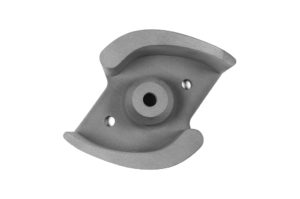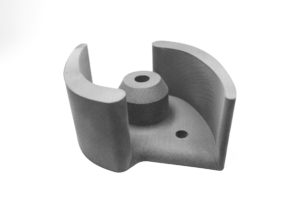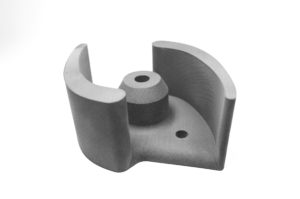Fire crews need to be as prepared as they possibly can for the fires to come, and that means being armed with the latest technology. Fire equipment has come a long way over the last few decades, resulting in better safety for fire crews as well as more effectiveness in fighting fires. There’s still plenty of room for improvement, though, and 3D printing can play a role in that improvement.
Fire crews often use floating pumps, which can be used to pump as much as 1000 dm3 of water per minute. These pumps must be optimized by correlating their operating characteristics, like pressure and efficiency, with engine operation, like power and engine speed. Sinterit, maker of the Lisa desktop SLS 3D printer, was recently responsible for the redesign of a floating pump to better optimize it. The rotor blades were redesigned in a process that, using conventional prototyping techniques, would involve eight successive stages, including 2D documentation, casting and processing.Instead, the designers used 3D printing, which reduced the necessary stages to only two. The 3D model was created, and it was then printed on the Lisa – that’s all. No machining or polishing was needed, and since holes could be designed right into the model, they didn’t need to be drilled or tapped. In addition, SLS 3D printing does not require supports, so that element of post-processing was unnecessary.
Overall, the production of the rotor blades was accelerated by 30 percent. Not only did the precision of the part and the lack of post-processing speed up the process, but if the part needed to be altered, it could easily be done in the software before printing out a new part. Thanks to the isotropic and mechanical properties of the SLS powder, the prototype part was fully suited to testing in real-life situations before creating the final version.
The massive wildfire in California may have been put out, but currently wildfires are burning in Arizona, Colorado and New Mexico, thanks to an unusually hot spring, a winter with little snowfall, and the carelessness of campers who are failing to extinguish their campfires. Large portions of national forests are being closed off to the public, and thousands are being forced to evacuate from their homes. This is just the start of what looks like it’s going to be an active and dangerous fire season across the American West. Firefighters can use all the help that they can get, and whether that’s a more efficiently prototyped part, sensors to offer earlier warnings, or other necessary parts, 3D printing can play a large role in fighting this ongoing battle.
Discuss this and other 3D printing topics at 3DPrintBoard.com or share your thoughts below. [All images provided by Sinterit]
Subscribe to Our Email Newsletter
Stay up-to-date on all the latest news from the 3D printing industry and receive information and offers from third party vendors.
Print Services
Upload your 3D Models and get them printed quickly and efficiently.
You May Also Like
The Dental Additive Manufacturing Market Could Nearly Double by 2033, According to AM Research
According to an AM Research report from 2024, the medical device industry, specifically in dentistry, prosthetics, and audiology, is expected to see significant growth as these segments continue to benefit from...
Heating Up: 3D Systems’ Scott Green Discusses 3D Printing’s Potential in the Data Center Industry
The relentless rise of NVIDIA, the steadily increasing pledges of major private and public investments in national infrastructure projects around the world, and the general cultural obsession with AI have...
AM Research Webinar Explores Continuum’s Sustainable Metal Additive Manufacturing Powders
Metal additive manufacturing (AM) powder supplier Continuum Powders is working to develop solutions that empower industries to reduce waste and optimize their resources. An independent life cycle assessment (LCA) of...
3D Printed Footwear Startup Koobz Lands $7.2M in Seed Round
California-based Koobz is focused on reshoring the U.S. footwear supply chain with advanced manufacturing processes, including 3D printing. The startup just announced that it has added $6 million to its...






































